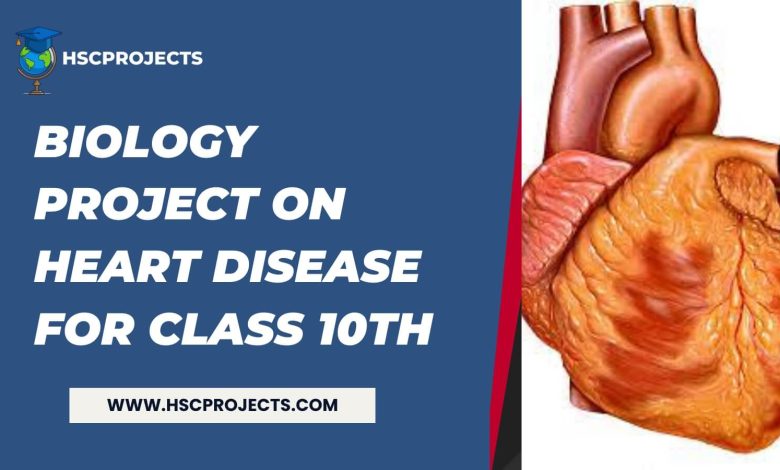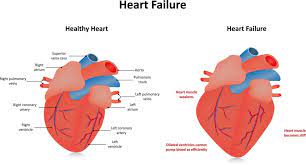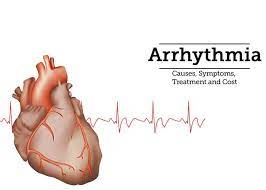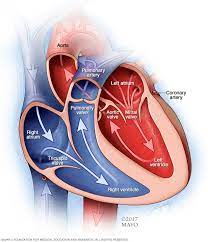
Biology Project On Heart Disease For Class 10th
Introduction
Heart disease, often referred to as cardiovascular disease, is a leading cause of mortality worldwide. This project aims to provide a comprehensive overview of heart disease, addressing its definition, prevalence, risk factors, types, symptoms, diagnosis, treatment, prevention, and the importance of heart health. Understanding heart disease is crucial for class 10 students as it can help promote awareness and a healthier lifestyle.
What is Heart Disease?
Heart disease, also known as cardiovascular disease (CVD), encompasses a range of conditions that affect the heart and blood vessels. It includes coronary artery disease, heart failure, arrhythmias, and more. At its core, heart disease involves the narrowing or blockage of blood vessels, reducing blood flow and oxygen supply to the heart. This can lead to chest pain (angina), heart attacks, or other complications. Heart disease is a chronic condition that often develops over time due to various factors.
Who Gets Heart Disease?
Heart disease can affect individuals of all ages, genders, and backgrounds. However, certain factors increase the risk, including age, family history, smoking, high blood pressure, obesity, diabetes, and a sedentary lifestyle. It is essential to note that heart disease is not exclusive to adults; even teenagers and children can develop risk factors that predispose them to this condition.
Types of Heart Disease
Heart disease is a vast spectrum, each form having its distinct characteristics and implications on the cardiovascular system. The principal types of heart disease include:
- Coronary Artery Disease (CAD): CAD stands as the most prevalent form of heart disease. It arises when the coronary arteries, responsible for supplying blood to the heart muscle, narrow or get clogged due to the accumulation of plaque. This hinders blood flow, causing chest pain (angina) and, if unaddressed, can lead to a heart attack.

- Heart Failure: Heart failure manifests when the heart fails to efficiently pump blood, resulting in a reduced capacity to meet the body’s oxygen and nutrient requirements. Causes include CAD, hypertension, or conditions that weaken the heart muscle. Symptoms encompass fatigue, shortness of breath, and fluid retention.

- Arrhythmias: Arrhythmias entail irregular heart rhythms, which can be excessively rapid (tachycardia) or too sluggish (bradycardia). They disrupt the heart’s pumping function, causing sensations of dizziness, palpitations, or fainting. Common examples are atrial fibrillation and ventricular tachycardia.

- Congenital Heart Defects: Some individuals are born with structural abnormalities in the heart, ranging from minor to severe, affecting the heart’s chambers, valves, or blood vessels. Often, surgical intervention is necessary during infancy or childhood.

- Valvular Heart Disease: Valvular heart disease pertains to issues with the heart valves, which regulate blood flow within the heart. Conditions like aortic stenosis or mitral regurgitation can result in valve dysfunction, leading to symptoms such as chest pain, fatigue, and breathlessness.

Signs and Symptoms
Recognizing the signs and symptoms of heart disease is paramount for early diagnosis and intervention. These manifestations can fluctuate depending on the type and severity of the condition:
- Chest Pain (Angina): A prevalent symptom of heart disease, angina can present as pressure, tightness, squeezing, or pain in the chest. It’s often triggered by physical exertion or stress.
- Shortness of Breath: Breathlessness, especially during physical activity or while lying down, can indicate heart disease and may accompany wheezing or coughing due to fluid accumulation in the lungs.
- Fatigue: Sustained fatigue or weakness, even with adequate rest, may indicate reduced blood flow to the heart muscle, resulting in insufficient oxygen delivery.
- Rapid or Irregular Heartbeat: Heart palpitations, characterized by a racing or fluttering sensation, could be indicative of arrhythmias. A slow or irregular pulse warrants attention as well.
- Swelling: Heart failure may lead to fluid retention, causing swelling in the legs, ankles, or abdomen, referred to as edema, due to the heart’s inability to pump blood effectively.
- Dizziness and Fainting: Inadequate blood supply to the brain may induce dizziness, lightheadedness, or fainting spells.
Recognizing these symptoms promptly and seeking medical attention can significantly enhance the prognosis for individuals with heart disease.
Causes and Risk Factors
Understanding the root causes and risk elements of heart disease is pivotal for prevention. While genetics can play a role, numerous modifiable factors exert substantial influence:
- Smoking: Smoking poses a major risk for heart disease by damaging blood vessels, reducing oxygen supply, and promoting plaque buildup in arteries.
- Unhealthy Diet: Diets high in saturated and trans fats, cholesterol, sodium, and refined sugars contribute to obesity, high blood pressure, and elevated cholesterol levels, all elevating the risk of heart disease.
- Physical Inactivity: A sedentary lifestyle can lead to obesity and other heart disease risk factors. Regular physical activity supports maintaining a healthy weight and fortifies the cardiovascular system.
- High Blood Pressure: Hypertension strains the heart and harms blood vessels. Control through lifestyle changes and medication is imperative for heart health.
- High Cholesterol: Elevated LDL (bad) cholesterol levels can result in plaque accumulation in arteries. Managing cholesterol levels through diet and medication is essential.
- Diabetes: Diabetes is a significant contributor to heart disease, damaging blood vessels and increasing the likelihood of other risk factors like high blood pressure.
- Obesity: Excess body weight increases the heart’s workload and promotes additional risk factors. Maintaining a healthy weight through diet and exercise is pivotal.
- Stress: Chronic stress can exacerbate heart disease risk through unhealthy coping mechanisms like overeating or smoking.
Comprehending these causes and altering lifestyle choices can markedly diminish the risk of developing heart disease.
Treatment
Addressing heart disease necessitates a tailored approach contingent on the particular condition and its gravity. It commonly combines various strategies:
- Lifestyle Adjustments: Often, the initial line of action involves lifestyle transformations. These encompass embracing a heart-healthy diet abundant in fruits, veggies, whole grains, and lean proteins, while curtailing sodium intake. Regular physical activity, quitting smoking, and moderating alcohol intake are also pivotal.
- Medications: Physicians may prescribe medications to manage different facets of heart disease. For instance, statins aid in reducing cholesterol levels, blood thinners thwart clot formation, and beta-blockers regulate blood pressure and heart rate. The medication choice hinges on the specific condition and individual requisites.
- Medical Procedures: In graver cases, medical interventions may prove indispensable. Angioplasty and stent insertion entail opening narrowed or obstructed arteries to restore blood flow. Bypass surgery reroutes blood around clogged arteries. Devices like pacemakers and implantable cardioverter-defibrillators (ICDs) help in heart rhythm control.
- Cardiac Rehabilitation: Following a heart attack or heart surgery, cardiac rehabilitation programs supply structured exercise, education, and support to expedite patient recovery and bolster heart health.
- Heart Transplant: In instances of severe heart failure or irreversible cardiac damage, the consideration of a heart transplant arises. This involves the replacement of a diseased heart with a healthy donor heart.
- Lifestyle Management: Long-term heart disease management mandates regular monitoring and adherence to prescribed treatments. Patients must adhere to healthcare provider recommendations and attend routine check-ups.
Effective treatment not only alleviates symptoms but also mitigates complication risks, ultimately enhancing the overall quality of life for individuals grappling with heart disease.
How Heart Disease Is Diagnosed
The process of diagnosing heart disease is a sequence of evaluations and assessments administered by healthcare professionals:
- Medical History: It commences with an exhaustive review of medical history, encompassing patient symptoms, family heart disease history, lifestyle factors, and existing health conditions.
- Physical Examination: A physical examination assists healthcare providers in pinpointing heart disease indicators, such as irregular heartbeats, fluid retention, or murmurs.
- Blood Tests: Blood examinations unveil vital data, including cholesterol levels, triglycerides, and cardiac damage markers like troponin and creatine kinase.
- Electrocardiogram (ECG or EKG): This non-invasive examination records the heart’s electrical activity, identifying irregular rhythms and other abnormalities.
- Echocardiogram: Sound waves create images of the heart’s structure and function, disclosing valve issues, heart muscle damage, or congenital anomalies.
- Stress Tests: Often involving exercise or medication, these tests monitor the heart’s response to stress, facilitating the diagnosis of coronary artery disease and heart function evaluation.
- Imaging Studies: A range of imaging techniques, including angiography or cardiac CT scans, offer detailed heart and blood vessel views to evaluate blockages or structural irregularities.
By integrating these diagnostic tools, healthcare providers can determine the heart disease type and severity, guiding treatment determinations.
Prevention
The prevention of heart disease emerges as a pivotal endeavor for sustained health and longevity. Here are core strategies for prevention:
- Balanced Diet: Cultivate a diet teeming with fruits, veggies, whole grains, lean proteins (like poultry and fish), and unsaturated fats. Constrict saturated fats, trans fats, salt, and sugar intake.
- Regular Physical Activity: Aim for a minimum of 150 minutes of moderate-intensity aerobic exercise or 75 minutes of vigorous-intensity exercise weekly. Incorporate strength training twice weekly.
- Smoking Cessation: Quitting smoking ranks among the most impactful steps to reduce heart disease risk. It’s never too late to quit, with substantial benefits awaiting.
- Stress Management: Employ stress-reduction techniques like meditation, deep breathing, or yoga to lower stress levels, which can contribute to heart disease.
- Blood Pressure Control: Maintain regular blood pressure monitoring and adhere to healthcare provider guidance to sustain healthy levels.
- Diabetes Management: For those with diabetes, closely collaborate with healthcare teams to proficiently manage blood sugar levels.
- Weight Maintenance: Achieve and sustain a healthy weight through a blend of a balanced diet and routine physical activity.
- Moderate Alcohol Intake: If alcohol is part of your life, do so moderately. Excessive alcohol consumption heightens heart disease risk.
- Regular Check-ups: Consistently attend healthcare provider appointments for check-ups and screenings, monitoring heart health and promptly addressing risk factors.
By integrating these preventive actions, individuals can significantly curtail heart disease risk while augmenting overall well-being.
Conclusion
In summary, heart disease, or cardiovascular disease, stands as a multifaceted and widespread health challenge that knows no boundaries in terms of age or background. This endeavor has furnished a comprehensive exploration of heart disease, encompassing its diverse forms, risk elements, indicators, diagnostic methods, and treatment avenues.
Grasping the intricacies of heart disease holds paramount significance, bestowing the capacity for proactive measures in prevention and early intervention. By embracing a heart-nurturing way of life—comprising a well-rounded diet, regular physical activity, and the rejection of smoking—individuals can profoundly curtail their heart disease susceptibility. Furthermore, effectively managing risk factors like hypertension, cholesterol levels, and diabetes emerges as a linchpin for heart well-being.
Furthermore, the realm of medical science has ushered in a spectrum of treatment possibilities, spanning lifestyle adaptations, pharmaceutical interventions, and surgical remedies. These avenues empower individuals grappling with heart disease to embark on paths to healthier living.
Our aspiration for this undertaking is to foster awareness regarding heart disease and heart health, ultimately contributing to a more enlightened and healthier community.
Bibliography
- American Heart Association. (2021). Heart disease and stroke statistics—2021 update: A report from the American Heart Association. Circulation, 143(8), e254-e743.
- Mayo Clinic Staff. (2021). Heart disease. Mayo Clinic. https://www.mayoclinic.org/diseases-conditions/heart-disease/symptoms-causes/syc-20353118
- National Heart, Lung, and Blood Institute. (2021). What is coronary artery disease? National Heart, Lung, and Blood Institute. https://www.nhlbi.nih.gov/health-topics/coronary-artery-disease
- World Health Organization. (2017). Cardiovascular diseases (CVDs). https://www.who.int/news-room/fact-sheets/detail/cardiovascular-diseases-(cvds)
Certificate of Completion
[Student’s Name][Class/Grade Level]This is to certify that I, [Student’s Name], a [Class/Grade Level] student, have successfully completed the project on “Heart Disease For Class 10th.” The project explores the fundamental principles and key aspects of the chosen topic, providing a comprehensive understanding of its significance and implications.
In this project, I delved into in-depth research and analysis, investigating various facets and relevant theories related to the chosen topic. I demonstrated dedication, diligence, and a high level of sincerity throughout the project’s completion.
Key Achievements:
Thoroughly researched and analyzed Biology Project On Heart Disease For Class 10th.
Examined the historical background and evolution of the subject matter.
Explored the contributions of notable figures in the field.
Investigated the key theories and principles associated with the topic.
Discussed practical applications and real-world implications.
Considered critical viewpoints and alternative theories, fostering a well-rounded understanding.
This project has significantly enhanced my knowledge and critical thinking skills in the chosen field of study. It reflects my commitment to academic excellence and the pursuit of knowledge.
Date: [Date of Completion]Signature: [Your Signature] [School/Institution Name][Teacher’s/Examiner’s Name and Signature]
In order to download the PDF, You must follow on Youtube. Once done, Click on Submit
Follow On YoutubeSubscribed? Click on Confirm
Download Biology Project On Heart Disease For Class 10th PDF






